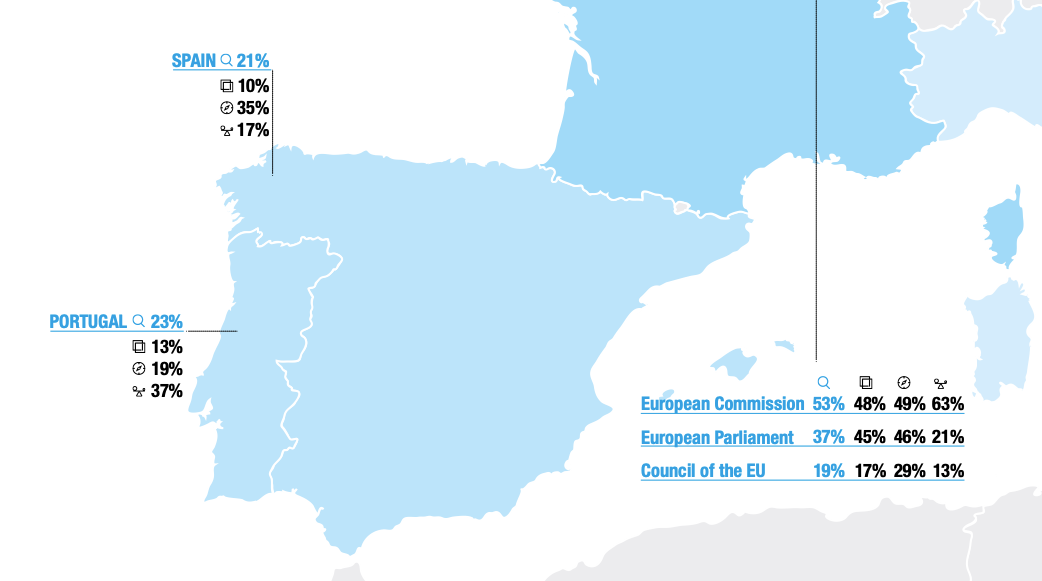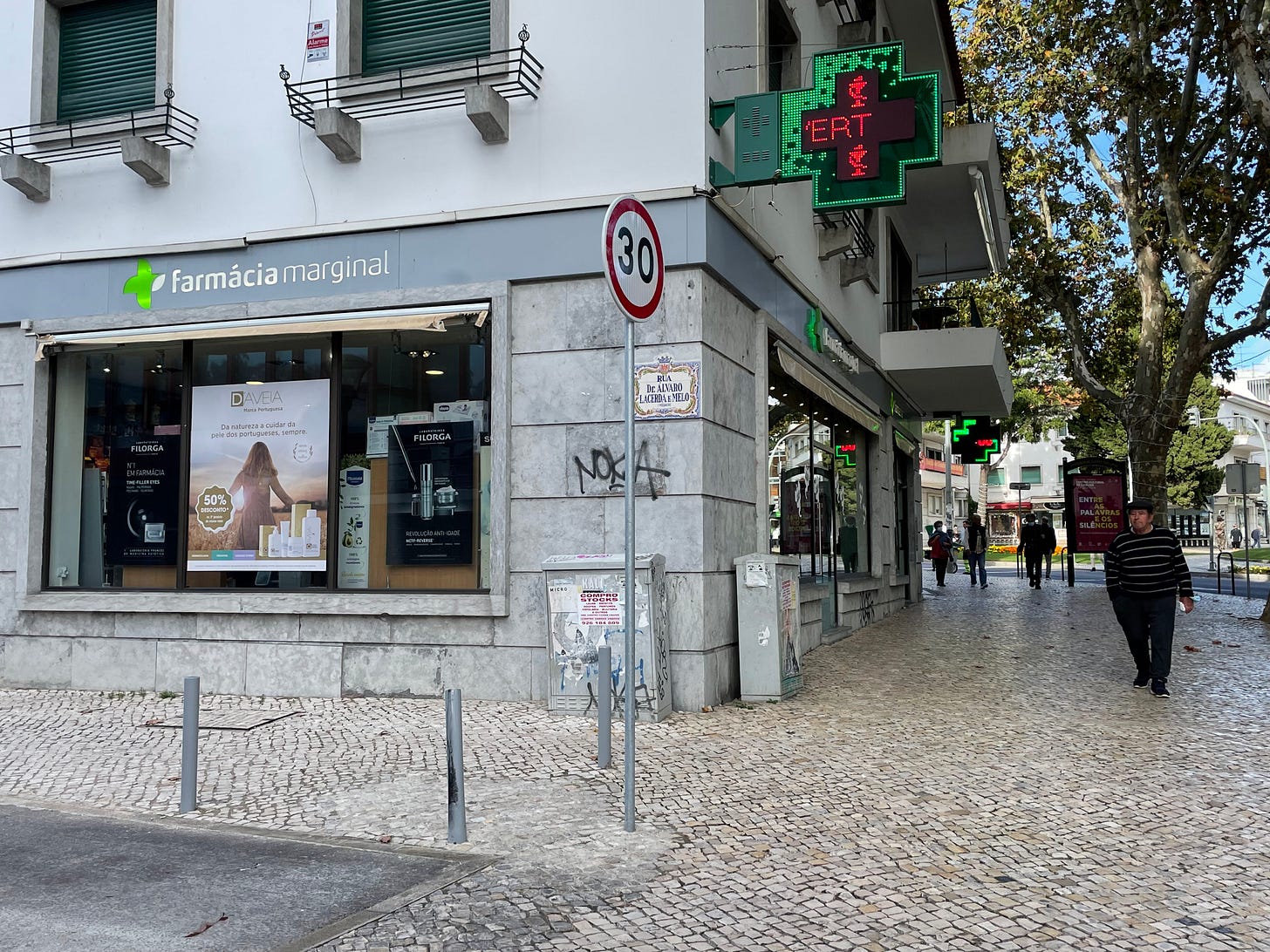We were returning from Lisbon on the Cascais train. Denise spotted two Americans, with large suitcases, struggling to find their Airbnb on the map. She offered our assistance. (Note to travelers: if possible use a backpack…luggage wheels do not work well on cobbled streets and sidewalks.) As we struggled up a hill I heard Denise ask about the purpose of their visit. Like many we have met, they are planning on leaving the States in hopes of finding a “better life”. Health care costs, particularly the price of medication, were a key concern.
When You Know How, But Won’t
The one traveler stated, “I can’t believe that our government can’t figure out a way to bring down the cost of prescription drugs!” “They know how,” I replied. “They choose not to because the pharmaceutical industry funds their campaigns.” While in my heart, I believed this was true…I wanted to do some research on the issue before I wrote about it. There had to be more complexity to the problem than my glib, cynical comment suggested.
Some Facts
So what did I learn? I learned:
Prescription drugs in the US are 2.56 higher than other countries, 3.44 higher for name-brand drugs;
Generic drugs are used more and are actually cheaper (84% of European prices) in the US;
The highest-priced drugs in the US are brand-name drugs that treat life-threatening illnesses such as hepatitis C or cancers;
The US accounts for 58% of sales ($) but just 24% of volume when analyzing all OECD nations (i.e. Americans don’t actually use more medication);
The US FDA is focused on safety, not cost-effectiveness. (Of course, Biogen Inc.'s Alzheimer’s drug, BIIB 0.68%, estimated to cost $56,000-a-year may prove ineffective, unsafe, and too costly.);
The FDA has not curtailed direct to consumer marketing efforts, which has increased the use of high-priced drugs;
The complexity of the US health care system (drug manufacturers, distributors, pharmacies, third-party administrators, and insurers) further drive up costs;
As health care insurance options have increased (the ACA, Children’s Health Programs, etc) pent up demand of the uninsured has led to increased expenditures.
Okay, we all know Americans pay more for prescription drugs; but permit me to offer a very personal example. Following my elbow surgery, my orthopedic surgeon prescribed Vimovo, a nonsteroidal anti-inflammatory drug (NSAID) with esomeprazole magnesium (which reduces the risk of ulcers and stomach pain). The retail price in Portugal is €22. Since this is a relatively “new” drug, the drug companies can call something new by taking two generic drugs and combining them, I decided to turn on my VPN, log into the US and check the price. Holy sh!t!
What About Lobbying
So, yes, we all know prescription drugs are more expensive in the States than in Europe or other parts of the world. But what about lobbying. Well, it turns out lobbying is alive and well in Europe. In fact, many folks are increasingly concerned about it. And in my research, I found that Portugal is not doing a great job of holding off the special interests.
I found an interesting study done by Transparency International.org in 2015:
In fact just 7 of the 19 countries assessed have regulation that targets lobbying and, in most cases, this regulation is ineffective.
Although lobbying is an important part of a healthy democracy, the lax rules mean that businesses and other special interests with lots of money and friends in the right places in cities like Brussels, Rome and Berlin can easily influence politicians and the law-making process in their country to put profits before people. —EUROPE: A PLAYGROUND FOR SPECIAL INTERESTS AMID LAX LOBBYING RULES
The study focuses on transparency (whether interactions are open to public scrutiny), integrity (are there rules on ethical conduct), and equal access (how open is the process to disparate views and interests). And as you can see above, Portugal does not score exceptionally well. In fact, in most instances, they are below the EU average.
What Can We Learn from Europe
As I have written before, we learn a lot when we travel. I certainly haven’t learned everything, but there are three things I think I have learned.
Europe limits direct-to-consumer advertising. TV advertising drives up costs, promotes the use of the new-fangled/more expensive drugs, and frankly drives many physicians crazy. The US should turn back the clock to 1997 and eliminate such advertising.
I also learned many countries in the EU refuse to pay for “new” drugs that prove no more effective than older/less expensive drugs.
Germany has allowed manufacturers to freely set prices for a limited period when bringing new drugs to the market. It then uses the data available from that period for a nongovernmental and nonprofit research body to evaluate the benefit provided by the new drug, as compared to existing alternatives. This added benefit, or lack thereof, then serves as the foundation for price negotiations between drug manufacturers and health plans. — The Conversation
And, of course, Europe utilizes a public/national health care approach. America has rejected such an approach in part because of a suspicion of governmental intervention and a disdain for concentrated power. Meanwhile, US government spending on healthcare (Medicare and Medicaid) now represents 20% of the Federal budget and 18.2% of GDP. (Note: the 20% figure does not include VA and Tricare expenditures so the total federal healthcare expenditure is actually higher.) And while the US exalts individual liberty and personal responsibility, its citizens’ life expectancy and medical outcomes fall behind.
Fundamentally, we know that the mindset in Europe is different. That its collectivist mindset places the good of the group/society above individual interests. This is at the heart of Europe’s corporatist approach vs. America’s capitalist approach. And as we are unsure if any of President Biden’s proposals related to drug pricing will be passed it often seems we have learned nothing will change.
Editor’s Note: a reader suggested I read an excellent article comparing health care costs in the US vs. other developed nations. If you are interested, here is the link.









Good article. My wife and I needed some Simethicone when we were in Portugal last month and definitely noticed it was more expensive there than here in Colorado. Your article explained why.
I think I recall reading and/or hearing on more than one occasion that the reasoning behind the higher costs in the US is due to the R&D costs (which, without price controls, the US market bears disproportionately) and without those higher costs there would be much less development of new remedies to mend our ailments … right … pay no attention to the man behind the curtain … please carry on with glibness and cynicism!